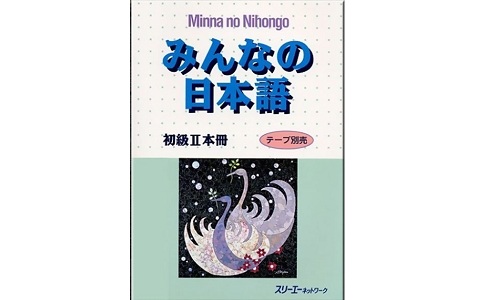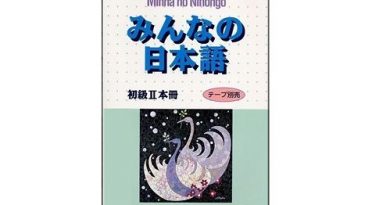Learn minna no nihongo lesson 1
Learn minna no nihongo lesson 1. hi everyone. In this post, Learn Japanese Daily will introduce you the very first lessons in the Japanese course-book : Minna no nihongo (Japanese for everyone)
Learn minna no nihongo lesson 1
Summary :
(for shorter summary, check here : Summary of Minna no nihongo coursebook lesson 1)
The 3 previous lessons had shown all the writing system of Japanese language. In this lesson learners will be study the first lesson. The lesson 1 will introduce some vocabularies, structures which are used in daily life. After finished the lesson, learners have to remember all the common vocabularies and structures.
The first part is the vocabulary about pronouns, school, hospital, company…
First group is person pronouns
The 1st person:
わたし me/I
わたしたち we
2nd person: あなた
This word is only use in case you meet a person for the first time and don’t know who he or she is.
3rd person :
かれ : he
かのじょ: she
あのひと: that person
However, when knowing someone name or having a close relationship, Japanese people don’t use あなた as above, they have rule of calling someone name.
When calling everybody, you say みなさん it is also like ladies and gentlmen
When calling someone name, the person who are in direct dialogue needs to call politely, they put さん after their name. But it is only use when call other people name, Japanese people don’t use it to ourselves.
When calling children, we put ちゃんafter their name. For example, the famous comic book marukochan, it has the name of the little girl Maruko, therfore, people will call her marucochan.
However, ちゃん is only use for little girls, for boys Japanese people callくん.
In case introducing where you come from “I am American”, the rule is to say the name of the country first then put the suffixeじん. For instance, I am Vietnamese ベトナムじん, I am Americanアメリカじん .
The vocabulary about school :
だいがく : University
がっこう : school
きょうし : teacher (career)
がくせい: student
せんせいis teacher. When speaking direct to the teachers or mentioning some other teacher they call せんせいinstead of calling their name…, this show the politeness and respect. It is also a word for referring to doctors. For example Lee…- teacher Lee or teacher Tanaka
The vocabulary about company are:
かいしゃ : company
かいしゃいん : employee of a company
But if in case using name of a company, it will be the word しゃいん. For example ABC しゃいん – employee of ABC company
Group of hospital:
びょういん : hospital
いしゃ: doctor.
ぎんこう: bank
ぎんこういん : bank employee
Name of countries in the World:
アメリカ : America
イギリス : England
インド : India
インドネシア: Indonesia
タイ : Thai Lan
ドイツ : Germany
フランス : France
ブラジル: Brazil
にほん : Japan
かんこく: Korea
ちゅうごく: China
Some structures:
First sentence when walking into a room: しつれいします it means Excuse me. When introducing a third person こちらは~さんです. For example my name is Ha, my friend have to say: こちらはハです
The questions “What is your name?” おなまえは? this is the short sentence of おなまえはなんですか, なんですか means What.
First sentence when introducing ourselves はじめましてmeans nice to meet you. The structures where you come from~からきました for example, アメリカ からきましたI am come from America, or ABCかいしゃ からきましたI am come from ABC company …
At the end you have to say どうぞよろしくおねがいしますmeans like please take care of me or please treat me favorable.
Part 2: Grammar
The structure affirmative sentence is N1はN2ですit means N1 is N2. In here N1 and N2 are nouns, and particle is は, N1 is the theme or also subject of a sentence, while N2 is the information that the writer or speaker would like to present about the subject. The particle は is the word mark the end of the subject. In Japanese there are some particle use to recognized subject and object.
The particle は when it is read or speak it is わ . For example, “I am a student” わたしはがくせいです
The negative sentence is N1はN2ではありませんin this sentence it changeですintoではありませ, it means N1 is not N2.
ではありませis use in writing or solemn presentation and in speaking, it is shorterじゃありませんor じゃない, this is only in use when it is less in formal. For instance when you speak to a person who you know before. For example “I am not a student” I will sayわたしはがくせいではありません or わたしはがくせいじゃありませ.
The question to confirm the information is correct or incorrect is is only added particleかat the end of the affirmative sentence, particleかis show that you are not sure about something, and you want to ask. When you use question to ask, you have to read it higher to emphasize the question same like in English The answer for the question, if it is correct はいor そうですif it is wrongいいえ.To give you an example, “Is Tanaka a student” the question is 田中さんはがくせいですか. If it is correct you sayはい、がくせいですand if it is wrong you sayいいえ、がくせいじゃありません. In question which has interrogative. For example Who, where, how… you just need to put in the sentence, the word order remains unchanged, then put particleかat the end of the sentence. For example, “Who is he?” it will be あのひとはだれですか. In here だれ means who.
The second sentence means as well or similar to, the structure of sentence is Nも. This sentence is use when want to present the second clause same as the first and this sentence have 2 clauses. For example “Tanaka is a student, Aki is also a student”, it will be 田中さんはがくせいです。秋さんもがくせいです.
The last sentence is the possessive sentenceN1のN2 means N2 of N1, take note in Japanese it is contrary to English, many people have a mistake on it. To understand it let’s take an example, “Tanaka is an employee of ABC company” 田中さんはABCのしゃいんです
Practice part:
Suppose the situation is set an American student name Lisa meet and talk to a Japanese student name Aki
Lisa: はじめまして(Nice to meet you)
Aki : はじめまして
Lisa: わたしはリサです。アメリカ からきました。よろしくおねがいします。
(I am Lisa, I am come from America. Please take care of me)
Aki : わたしは秋です。日本 からきました。よろしくおねがいします。
(I am Aki, I’m come from Japan. Please take care of me too.)
The Japanese song of the lesson: 僕は熊 I am bear
In the cultural corner, the lesson will introduce some Japanese etiquette
First is the way to bow:
To bow is the traditional custom in Japan. There are 3 ways to bow, it is divide to the level relationship between 2 people, location, time and context. First of all is slightly bow 15 degree when you meet a person in high position or in lobby. Second, is medium bow 30 degree you bow a little bit lower and respect the person. Finally, respectful bow 45 degree to the special person or in case solemn. Don’t bow head, your back must be straight.The way to put hands in woman and men also different, man let two hands straight flank, for woman they put their hands in front.
Second is the behavior through telephone:
Japanese company has the view that the way employee behave through telephone is the basic things to evaluate the company, it also affect the fail of the job. When the phone call, we have to pick up the phone in the first or second bell and say the name of the company, don’t let the customer waiting. In case you are busy with your work and have to pick up the phone late in 3 rings you have to say sorry first. When calling phone try to talk in brief and focus on purpose of the job to avoid wasting time of the listener, even write it down what you need to say before calling someone.
Third is the appearance.
The appearance is considered a characteristic of Japanese culture. Focus on the appearance is the way you respect the people around and show the quality of human, especially in business. Clothes is suitable for the context, location, ages. It affect a lot to prestigious of individual and company. In education, to educate the employee, some company guide the employee in detail from clothes to hair and nails. The motto of Japanese is derived from the appearance, it means first is always the appearance then the aim of each things
Fourth is attitude in working
Employee always have on time, especially don’t let the guests to wait
Therefore, lots of Japanese have the habit to turn the watch into few minutes. The way you keep appointments is also show through the phone, come to the company on time, deliver to customer on time. In working, employee from company use “we” more than “I”, Japanese people conceived that the success of the work come from the effort of teamwork, nobody can success by themselves. They emphasize the value of teamwork. In the way to behave to boss, may be in Japan, the decentralization between employee and employer is one of the famous custom in Japanese culture, employee must notice from the way to talk, eating in table and in work….
Fifth is business card is really important for the first time meet.
After received the business card, keep it carefully to respect the person. Don’t put it in the pocket, you have to put it carefully in the wallet or small bag of business card, but while you are talking in the table just put it on the table.
It can be said that, the wise behavior also polite in work combine a good custom that help Japanese people always success in their business. We have to learn from them to improve ourselves.
The lesson 1 mark the first lesson after learning the writing system, in here learners will have to remember the vocabularies, structures and find out more about Japanese etiquette.
Above is Learn Japanese for beginner lesson 5. Check out the next lesson here : learn minna no nihongo lesson 2 or see other similar lesson in category : learn japanese for beginer or learn japanese with minna no nihongo. We hope with the instruction in this post, you will find that learning Japanese is not so difficult and you can learn Japanese by yourself. If you have any question, just leave us your question below the post.
Stay with us on :
Facebook - Twitter - Pinterest - Reddit




Amazing work thank you so much!
So I think the use of “practical” when referring to は is a typo, maybe particle is more suitable. If I’m wrong I’m sorry for wasting your time.
Thanks Pete! they’re my mistakes. I fixed them